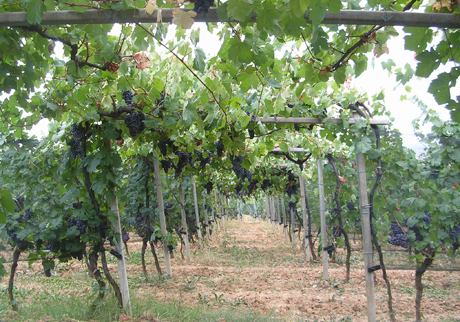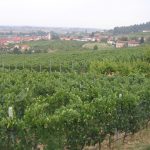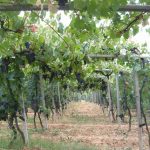
Name
Colline Saluzzesi
Seal of quality
A.O.C
A.O.C D.M 14 settembre 1996, modificato con D.M. 17 febbraio 1997
Description
Colline Saluzzesi wine is produced in various varieties.
Colline Saluzzesi: This denomination without specification of the vine is reserved for red wine made from grapes coming from vines located within the vine growing estate; consisting of Pelaverga, Nebbiolo, Barbera varieties either alone or together to a minimum of 60%. Other vines can be used in the wine of red grape variety that are non-aromatic and authorized and recommended for the Province of Cuneo and making up a maximum of 40%. The wine is of a ruby red colour, it has a winy bouquet which is also intense, fruity and characteristic. The taste is fresh, dry, and intensely fruity, minimum alcohol content 10°.
Colline Saluzzesi Pelaverga: 100 %Pelaverga grapes. The wine has a light reddish hue, with a delicate, fine and fragrant bouquet with delicate fruity overtones of cherry and raspberry, with a slightly spicy note, a characteristic dry, harmonious and smooth taste, in the fresh sweet variety, with a subtle raspberry aroma, which is sometimes persistent, with a minimum alcohol content of 10°.
Colline Saluzzesi Quagliano: 100% Quagliano Grapes. This wine has a light red colour, a delicately winy bouquet, with a hint of violets, with a characteristic and pleasing aroma, the taste, is pleasantly sweet, and it has a medium-body, that is fruity and sometimes persistent :minimum alcohol content 10° of which at least 5.5° finished.
Colline Saluzzesi Quagliano Spumante: 100% Quagliano grapes. The wine is of a red colour tending to purple, with a fine and persistent foam, an intensely winy bouquet with hints of violet and with a pleasant and typical aroma; a pleasantly sweet taste, and medium body, fairly fruity with a minimum alcohol content of 11° of which at least 7° finished.
Area of production
The production area comprises the land in the communes of Pagno and Piasco as a whole and a part of the lands in the comunes of Castellar, Brondello, Saluzzo, Manta, Verzuolo, Costigliole Saluzzo and Busca. It is a particularly favourable area in terms of climate and it has maintained several vineyards despite the fierce competition from the fruit orchard cultivations particularly well developed in this area and the nearby plains. As regards the varieties Pelaverga is present mainly in the Bronda valley, while along the hillside section which extends from Saluzzo to Busca, the cultivation of the Quagliano grape is particularly well preserved, especially in the area of Costigliole Saluzzo.
History
As regards the Pelaverga vine, the documented historic references confirm the fact that the wine produced in these small Alpine valleys was renowned and highly regarded as from Roman times, the Romans particularly appreciating its aphrodisiac qualities.There are also another series of historic testimonies that confirm the great appreciation for this wine, and in the Renaissance period, the year 1511 to be precise, the Marquise Margherita di Foix sent Pope Julius II, as each year the famous “trenta bottalli, perché il bon vino gli piasia…..e che tanto bene faceva alla città di Saluzzo”. It was in this manner that the Marquisate of Saluzzo, was repaid with a Bishop’s seat and all the related benefits.While more recent history informs us that Pelaverga wine, following a period of near oblivion, gradually began to acquire status and standing on the Italian wine production scene under the name of Colline Saluzzesi, and acquired D.O.C. status in 1996 and today thanks to the ongoing commitment of its competitive producers it has acquired all the standing and renown reserved for only the most high quality wines.
The obtaining of D.O.C. status, together with the passion of some of the local producers for painstaking commitment in excellent local conditions, led to the creation in December 2001 of a Consortium named “Consorzio Colline Saluzzesi” with the precise aim of protecting, enhancing and overseeing the interests related to the wine Denomination of Origin. As well as the organization and coordination of the operations of associates involved in the production and marketing of the wines under this denomination.
Quagliano is also an indigenous vine typical of our hillside. The word Quagliano in relation to wine was first cited in the rural notices of the town of Busca, published in 1721, and once again we find reference in the rural notices of the commune of Costigliole in 1749. At one time this highly prized grape variety was sold at the markets of the nearby villages as its organoleptic qualities were highly appreciated. There were also many who used Quagliano grapes for the so-called “Grape treatment”, without going further into its diuretic effects.

